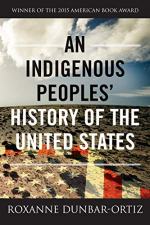
|
| Name: _________________________ | Period: ___________________ |
This test consists of 15 multiple choice questions and 5 short answer questions.
Multiple Choice Questions
1. What was the name of the Sauk leader in 1832?
(a) Little Turtle.
(b) Crazy Horse.
(c) Black Hawk.
(d) Tecumseh.
2. To which country did the Muskogee nation ally itself in an attempt to stop the flow of squatters?
(a) France.
(b) Spain.
(c) England.
(d) Mexico.
3. What military euphemism is used to describe bombs?
(a) Detention.
(b) Liberation.
(c) Incursion.
(d) Ordnance.
4. What year was the Treaty of Fort Jackson signed?
(a) 1814.
(b) 1810.
(c) 1808.
(d) 1812.
5. What animal served as the economic base of the Plains Nations?
(a) The horse.
(b) The cow.
(c) The buffalo.
(d) The pig.
6. What year did Minnesota become a non-slavery state?
(a) 1857.
(b) 1858.
(c) 1859.
(d) 1860.
7. What statement did General Sherman issue to President Grant following the Fetterman Massacre?
(a) The U.S. government should break treaties with Native nations.
(b) U.S. troops should kill all Natives, including women and children.
(c) U.S. forces should withdraw from the West and cease hostilities.
(d) The U.S. army should receive additional training on Native customs.
8. What was the name of the dance which was supposed to restore the Indigenous world to its pre-colonial state?
(a) The Ghost Dance.
(b) The Dance of Sprits.
(c) The Ancestral Dance.
(d) The Dance of Repatriation.
9. Which term for robbers was often used by white settlers to describe Natives?
(a) Raiders.
(b) Bandetti.
(c) Corsairs.
(d) Maurauders.
10. What year was President Lincoln inaugurated?
(a) 1859.
(b) 1863.
(c) 1865.
(d) 1861.
11. What was the nickname of the U.S. naval fleet in the early 1900s?
(a) The Great Imperial Fleet.
(b) The Great American Fleet.
(c) The Great White Fleet.
(d) The Great Gray Fleet.
12. Who wrote the novel The Last of the Mohicans?
(a) Stephen Crane.
(b) Nathaniel Hawthorne.
(c) D.H. Lawrence.
(d) James Fenimore Cooper.
13. Which of the following Native nations was a member of the Five Civilized Tribes?
(a) Apache.
(b) Osage.
(c) Seminole.
(d) Odawa.
14. What was the name of the settler-ranger who became president of the independent country of Franklin?
(a) William H. Seward.
(b) William Sherman.
(c) John Sevier.
(d) Daniel Boone.
15. Which U.S. president publicly defended Lieutenant William "Rusty" Calley, an active participant in the My Lai massacre?
(a) Ronald Reagan.
(b) Richard Nixon.
(c) Jimmy Carter.
(d) Gerald Ford.
Short Answer Questions
1. What year did the Sand Creek Massacre take place?
2. What periodical published The Adventures of Col. Daniel Boone?
3. What was the first U.S. university to offer a doctorate in Native American studies?
4. What was the name of the Lakota Sioux's sacred land, where Mount Rushmore is now located?
5. What year did Andrew Jackson become president?
|
This section contains 413 words (approx. 2 pages at 300 words per page) |

|




